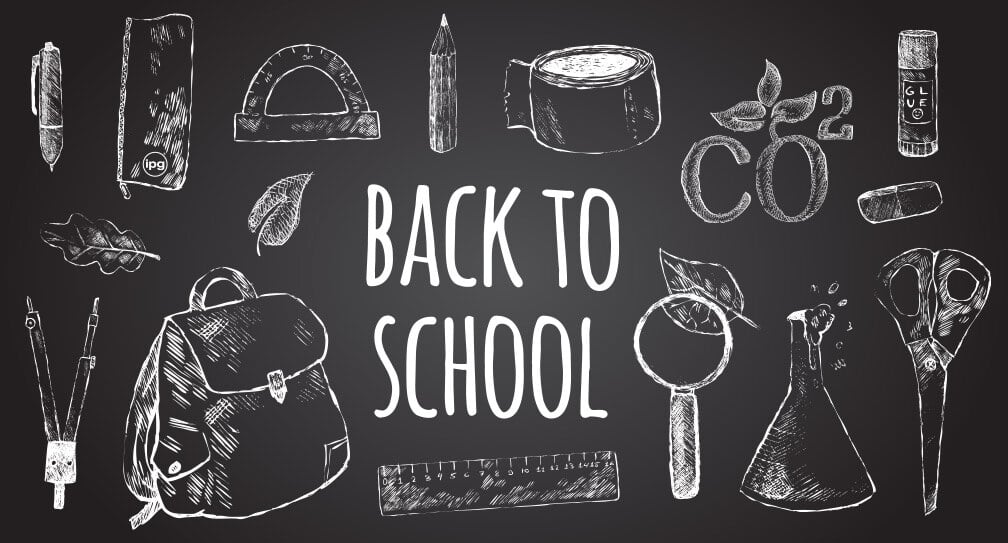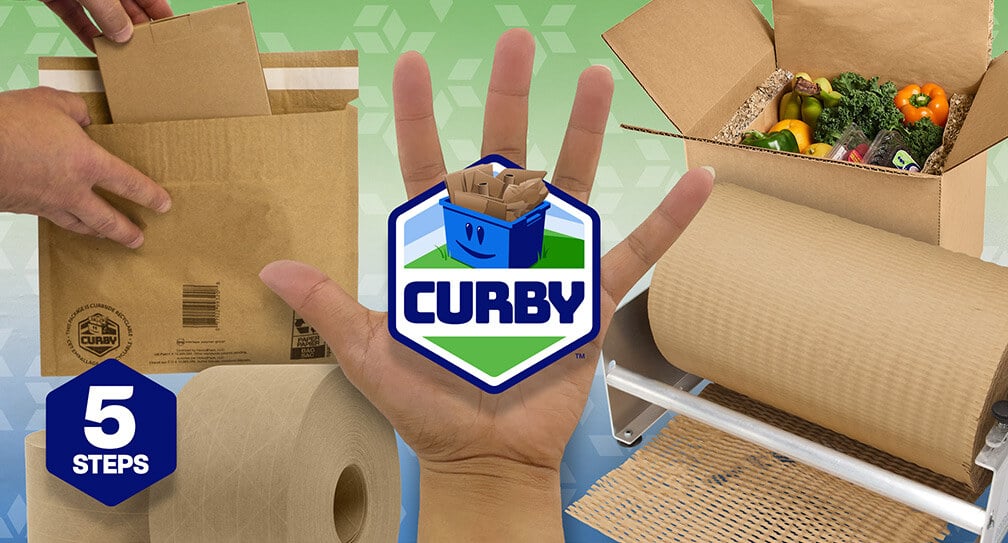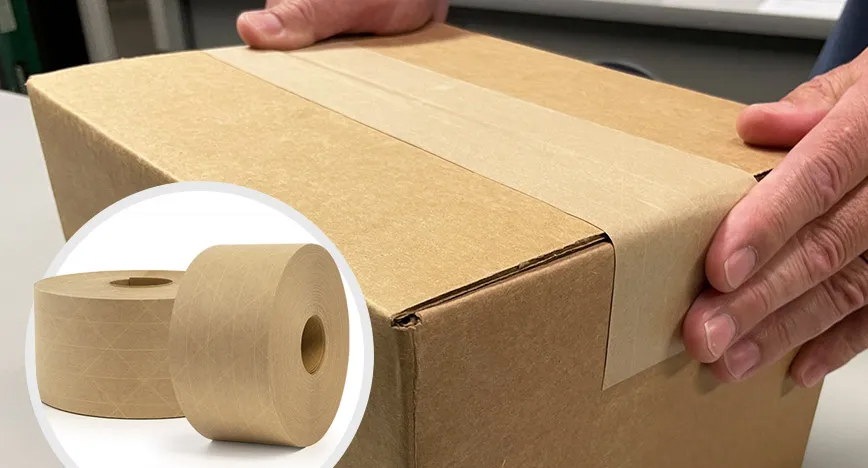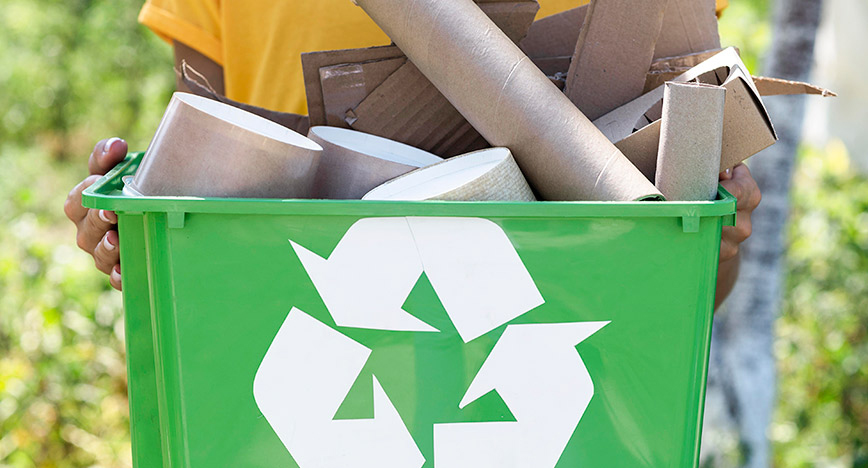It’s back-to-school season and a great time to think about more than just new school supplies and schedules. It's an opportunity to consider how our choices impact the environment. From the lunchbox to the wardrobe, our decisions can either reduce or increase our carbon footprint. Here are some effective habits to reduce your carbon footprint this back-to-school season by focusing on food, packaging, and clothes.
1. Impact of Food Waste
When food is not eaten, the resources used to produce and transport it have been wasted. Sending wasted food to a landfill is a double threat; valuable nutrients are taken out of our ecosystem and food decay releases methane, a greenhouse gas more potent than carbon dioxide.
According to the US EPA, food waste in the US is responsible for the equivalent of 170 million metric tons of GHG emissions each year. This is over 1000 times the GHG emissions from IPG facilities worldwide in 2023.
Tips to Reduce Food Waste:
 Plan Ahead: Check your pantry, fridge and freezer to plan your meals for the week before making a shopping list. At the grocery store, stick to your list and avoid buying unnecessary items that might go to waste. Then store food properly so it won’t spoil.
Plan Ahead: Check your pantry, fridge and freezer to plan your meals for the week before making a shopping list. At the grocery store, stick to your list and avoid buying unnecessary items that might go to waste. Then store food properly so it won’t spoil.- Pack Smart Lunches: When packing lunches, choose portion sizes to ensure food isn’t wasted. If composting isn’t available at your school or office, bring home any uneaten food so it can be repurposed or composted.
- Composting: Learn about your local composting options. If you have the time and space, consider composting at home. It’s a kid-friendly activity and great way to turn food scraps into valuable compost that can enrich your soil instead of contributing to landfill waste.
2. Choosing the Right Packaging
As with food, the materials used in packaging are wasted if they are buried in a landfill. When single-use plastics are the right packaging choice, they should be recycled at the end of use. But when reusable packaging is a good fit, it can both keep materials out of landfills and reduce the energy used to make and transport new products.
Tips for Using Reusable Packaging:
 Reusable Food and Beverage Containers: Instead of disposable plastic bags, use reusable containers made of durable materials like stainless steel or BPA-free plastic, these reduce waste and are often more cost-effective in the long run.
Reusable Food and Beverage Containers: Instead of disposable plastic bags, use reusable containers made of durable materials like stainless steel or BPA-free plastic, these reduce waste and are often more cost-effective in the long run.- Eco-friendly Wrappings: Consider using beeswax wraps or other eco-friendly alternatives for wrapping sandwiches and snacks. These can be reused many times and are a great way to reduce plastic usage.
- At the store: Remember your reusable bags when you head out to shop. If you do take a bag from the store, consider reusing or repurposing it before you recycle it. And don’t forget packaging from online shopping – like IPG’s AirSpace, Bubble and PaperSpace products - can be reused many times before recycling.
3. Slow Down the Fashion Cycle
One of our favorite things about changing seasons is refreshing our wardrobes. Some retailers and brands depend on and design clothes for short-term use. This is called “fast fashion” and comes at a high environmental cost. Textile production has impacts on energy, water, and land use. Just as with food and packaging, good habits can reduce the carbon footprint of looking good.
Tips to Avoid Fast Fashion:
 Buy Second-Hand: Thrift stores and online resale platforms offer a wide range of gently used clothing at a fraction of the cost of new items. This is a sustainable option that reduces waste and the demand for new clothing production.
Buy Second-Hand: Thrift stores and online resale platforms offer a wide range of gently used clothing at a fraction of the cost of new items. This is a sustainable option that reduces waste and the demand for new clothing production.- Quality Over Quantity: Invest in high-quality, durable clothing that will last longer, even if it costs a bit more. In addition to reducing the need for frequent replacements, ultimately saving money, this reduces the overall amount of microplastics released due to laundering.
- DIY and Upcycling: Encourage creativity by upcycling older clothes into new outfits. Simple sewing projects can transform worn-out garments into something unique and stylish.
By focusing on reducing food waste, using reusable packaging, and avoiding fast fashion, you can significantly reduce your family's carbon footprint this back-to-school season. These small changes can make a big difference in promoting sustainability and protecting our planet for future generations. For more eco-friendly packaging solutions and tips, visit itape.com.




